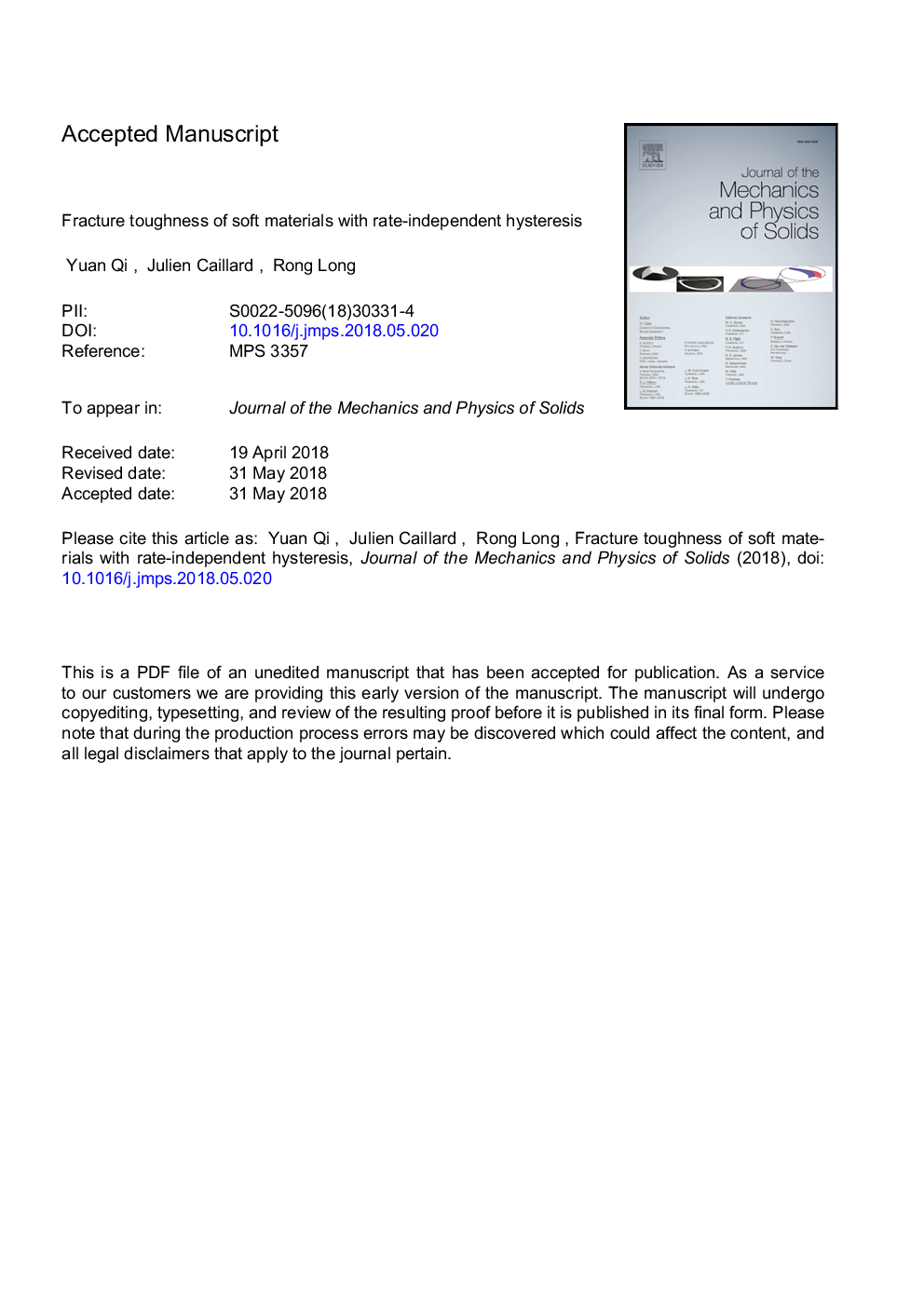| Article ID | Journal | Published Year | Pages | File Type |
|---|---|---|---|---|
| 7177397 | Journal of the Mechanics and Physics of Solids | 2018 | 54 Pages |
Abstract
The fracture toughness of soft elastomers or gels can be substantially enhanced by introducing various energy dissipation mechanisms into the bulk material. Bulk dissipation, manifested in the hysteresis of loading-unloading cycles, enables the formation of a dissipation zone around the crack tip that consumes most of the energy provided by the external loading to drive crack propagation, effectively increasing the fracture toughness. An in-depth understanding on how bulk dissipation contributes to fracture toughness is required to predict crack propagation in soft materials with significant hysteresis. However, the current understanding is limited to the qualitative or empirical level due to the complex nonlinear mechanics involved in soft material fracture. This paper presents a theoretical framework for calculating the energy dissipation associated with crack propagation. To demonstrate its utility, we focus on steady state crack propagation and consider a model material system with rate-independent hysteresis: a neo-Hookean solid with Mullins effect. We determine analytical relations between fracture toughness and the parameters governing bulk hysteresis, and quantitatively predict the reduction in fracture toughness due to pre-stretch. Both agree well with finite element results. The framework presented here can be applied to a broader range of dissipative soft materials, thus providing a theoretical tool to guide the engineering of soft materials with high toughness.
Related Topics
Physical Sciences and Engineering
Engineering
Mechanical Engineering
Authors
Yuan Qi, Julien Caillard, Rong Long,
